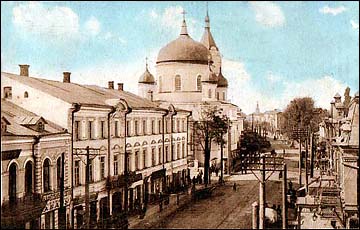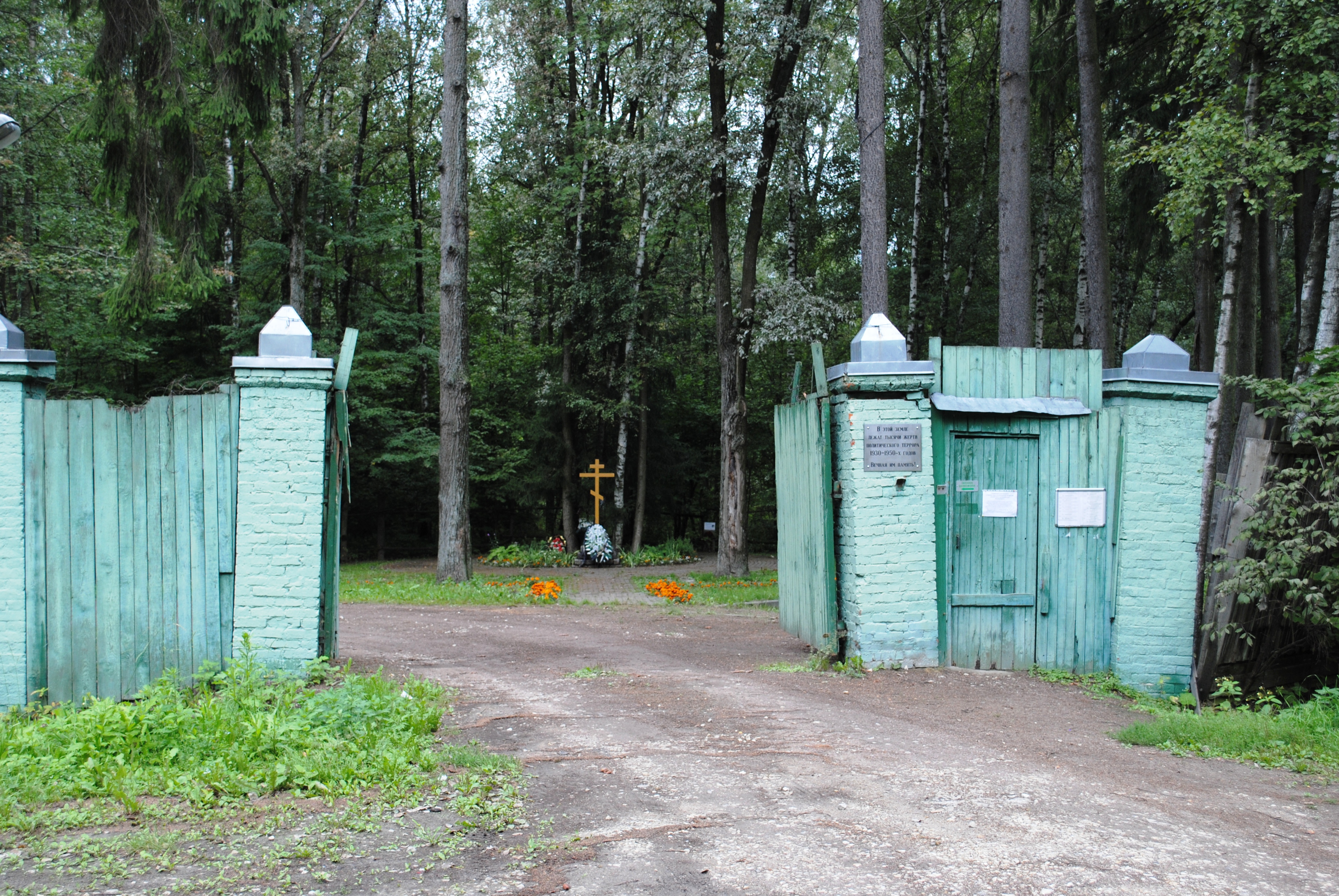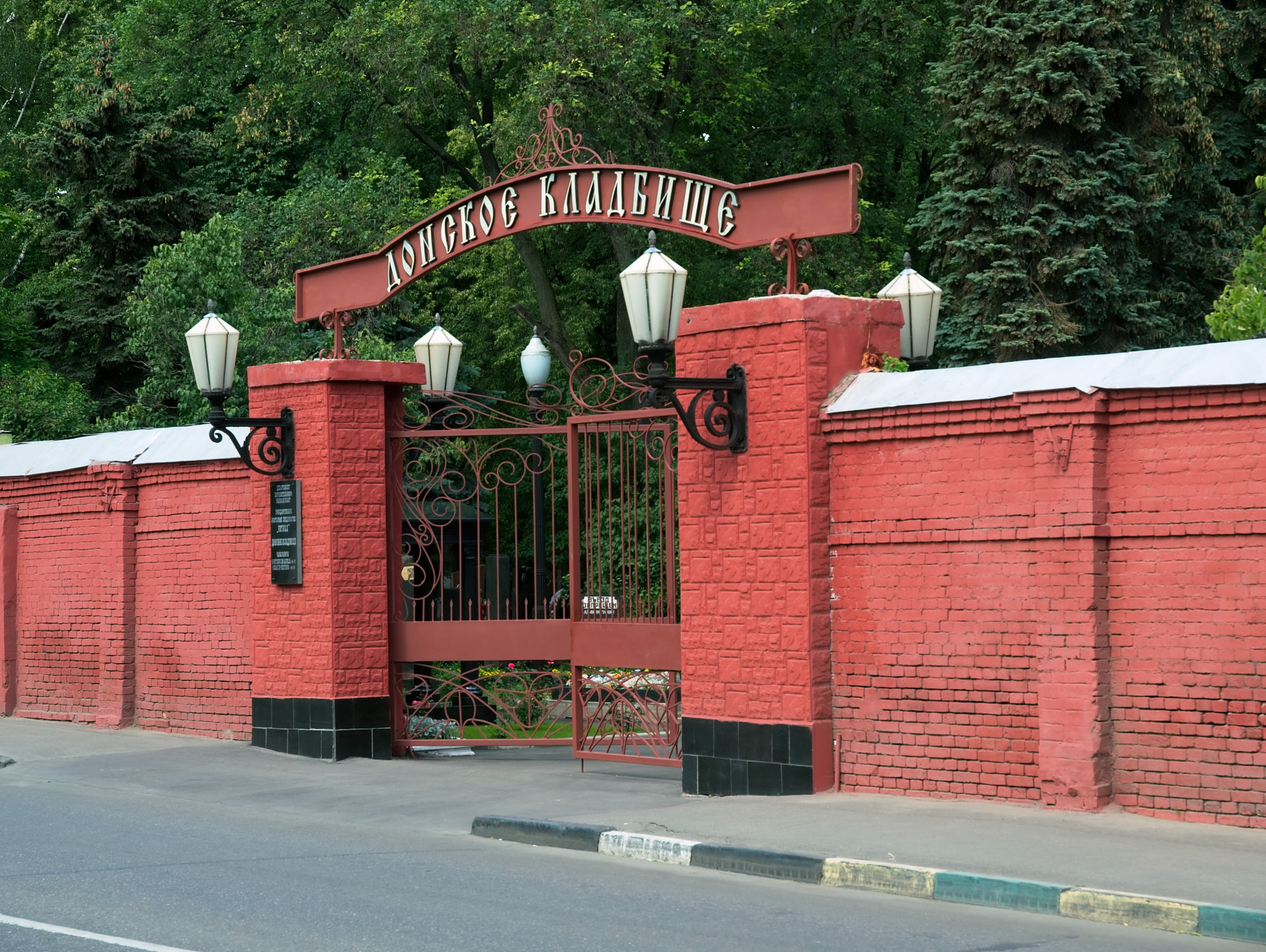|
Mass Graves In The Soviet Union
In July 2010, a mass grave was discovered next to the Peter and Paul Fortress in St. Petersburg, containing the corpses of 80 military officers executed during the Red Terror of 1918–1921. By 2013 a total of 156 bodies had been found in the same location. At about the same time a mass grave from the Stalin period was discovered at the other end of the country in Vladivostok. These and later mass graves in the Soviet Union were used to conceal the large numbers of Soviet citizens and foreigners executed by the Bolshevik regime under Vladimir Lenin and Joseph Stalin. Indiscriminate mass killings began in January 1918 during the Russian Civil War (1918-1922) as the Bolsheviks launched their Red Terror. After the upheavals of the First Five-Year Plan (1928-1932) the killings reached a peak in the Great Purge, Great Terror of 1937–1938. At all times they were directed and carried out by the Soviet secret police under its changing titles: the Cheka during the Civil War, the OGPU dur ... [...More Info...] [...Related Items...] OR: [Wikipedia] [Google] [Baidu] |
Peter And Paul Fortress
The Peter and Paul Fortress is the original citadel of St. Petersburg, Russia, founded by Peter the Great in 1703 and built to Domenico Trezzini's designs from 1706 to 1740 as a star fortress. Between the first half of the 1700s and early 1920s it served as a prison for political criminals. It has been a museum since 1924. Today it has been adapted as the central and most important part of the State Museum of Saint Petersburg History. The museum has gradually become virtually the sole owner of the fortress building, except the structure occupied by the Saint Petersburg Mint (Monetniy Dvor). History From foundation until 1917 The fortress was established by Peter the Great on May 16 (Old Style; henceforth "(O.S.)"; May 27 by the Gregorian Calendar) 1703 on small Hare Island by the north bank of the Neva River, the last upstream island of the Neva delta. From around 1720, the fort served as a base for the city garrison and also as a prison for high-ranking or political priso ... [...More Info...] [...Related Items...] OR: [Wikipedia] [Google] [Baidu] |
Zhytomyr
Zhytomyr ( uk, Жито́мир, translit=Zhytomyr ; russian: Жито́мир, Zhitomir ; pl, Żytomierz ; yi, זשיטאָמיר, Zhitomir; german: Schytomyr ) is a city in the north of the western half of Ukraine. It is the administrative center of Zhytomyr Oblast (province), as well as the administrative center of the surrounding Zhytomyr Raion (district). The city of Zhytomyr is not a part of Zhytomyr Raion: the city itself is designated as its own separate raion within the oblast; moreover Zhytomyr consists of two so-called "raions in a city": Bohunskyi Raion and Koroliovskyi Raion (named in honour of Sergey Korolyov). Zhytomyr occupies an area of . Its population is Zhytomyr is a major transport hub. The city lies on a historic route linking the city of Kyiv with the west through Brest. Today it links Warsaw with Kyiv, Minsk with Izmail, and several major cities of Ukraine. Zhytomyr was also the location of Ozerne airbase, a key Cold War strategic aircraft base s ... [...More Info...] [...Related Items...] OR: [Wikipedia] [Google] [Baidu] |
The New York Times
''The New York Times'' (''the Times'', ''NYT'', or the Gray Lady) is a daily newspaper based in New York City with a worldwide readership reported in 2020 to comprise a declining 840,000 paid print subscribers, and a growing 6 million paid digital subscribers. It also is a producer of popular podcasts such as '' The Daily''. Founded in 1851 by Henry Jarvis Raymond and George Jones, it was initially published by Raymond, Jones & Company. The ''Times'' has won 132 Pulitzer Prizes, the most of any newspaper, and has long been regarded as a national "newspaper of record". For print it is ranked 18th in the world by circulation and 3rd in the U.S. The paper is owned by the New York Times Company, which is publicly traded. It has been governed by the Sulzberger family since 1896, through a dual-class share structure after its shares became publicly traded. A. G. Sulzberger, the paper's publisher and the company's chairman, is the fifth generation of the family to head the p ... [...More Info...] [...Related Items...] OR: [Wikipedia] [Google] [Baidu] |
Kolpashevo
Kolpashevo (russian: Колпа́шево) is a town and the administrative center of Kolpashevsky District in Tomsk Oblast, Russia, located on the Ob River. Population: History It has existed since the beginning of the 17th century as a village. Town status was granted to it in 1938. Mass grave During the Great Purge, Kolpashevo was the site of mass executions carried out by the NKVD, with the corpses of those executed being disposed of in mass graves. In May 1979 meandering of the Ob river caused a mass grave containing more than 1,000 mummified corpses to become exposed. A number of cover-stories were issued by the local government, first that these bones were cattle bones, and then that these were the bodies of deserters from the Second World War. Instead most of the bodies were people from Tomsk. Yegor Ligachev, the provincial party chief, took charge of a cover-up operation to destroy the mass grave using tugs, and used the KGB to coerce local people to dispose of the ... [...More Info...] [...Related Items...] OR: [Wikipedia] [Google] [Baidu] |
Kolpashevsky Yar
Kolpashevsky Yar is a high steep bank of the Ob River in the city of Kolpashevo, Tomsk Region, Russia. It is known mainly as the place of mass graves of people who were shot or died in the NKVD The People's Commissariat for Internal Affairs (russian: Наро́дный комиссариа́т вну́тренних дел, Naródnyy komissariát vnútrennikh del, ), abbreviated NKVD ( ), was the interior ministry of the Soviet Union. ... prison in the Narym district in the 1930s - 1940s. According to the Memorial society, the total number of people buried in the Kolpashevsky Yar is about 4000 people. The burials were accidentally opened in late April - early May 1979, when the spring flood of the Ob River washed the banks and exposed one of them, but soon the remains and signs of the burials were eliminated. In 1992, a memorial sign about the intention to erect a monument to the victims was installed at the burial site. Executions and burials A. Spragovsky, senior investi ... [...More Info...] [...Related Items...] OR: [Wikipedia] [Google] [Baidu] |
Kommunarka Shooting Ground
The Kommunarka firing range (russian: Расстрельный полигон «Коммунарка»), former dacha of secret police chief Genrikh Yagoda, was used as a burial ground from 1937 to 1941. Executions may have been carried out there by the NKVD during the Great Terror and until the war started; alternatively, bodies of those shot elsewhere might have been brought there for later interment."The Kommunarka burial site in Moscow", Russia's Necropolis of Terror and the Gulag ''en.mapofmemory.org'' As the late explained: "firing range" was a popular euphemism adopted to describe mysterious and closely-guarded plots of land tha ... [...More Info...] [...Related Items...] OR: [Wikipedia] [Google] [Baidu] |
Donskoye Cemetery
The New Donskoy Cemetery (Новое Донское кладбище) is a 20th-century necropolis sprawling to the south from the Donskoy Monastery in the south-west of Central Moscow. It has been closed for new burials since the 1980s. History The cemetery outside the monastery walls was established in 1910, when there was no more place for new burials inside the medieval monastery. The speaker of the first Russian parliament, Sergey Muromtsev, was among the first notables to be interred there. Maria Gartung, the daughter of Alexander Pushkin who served for Leo Tolstoy as a model for Anna Karenina, was buried in 1919.http://mosritual.ru/mesta-zahoronenija/donskoe-kladbische After the Russian Revolution, scores of Soviet soldiers killed during the Battle of Moscow and people executed by NKVD were secretly buried at the Donskoy Cemetery. It is believed that the Mass graves from the era contain the remains of Mikhail Tukhachevsky, Pyotr Krasnov, Vsevolod Meyerhold, Isaac Ba ... [...More Info...] [...Related Items...] OR: [Wikipedia] [Google] [Baidu] |
Butovo Firing Range
The Butovo Firing Range or Butovo Shooting Range (russian: Бутовский полигон) was an execution site of the Soviet secret police located near Drozhzhino in Leninsky District, Moscow Oblast from 1938 to 1953. Its use for mass execution has been documented; it was prepared as a site for mass burial. As the late Arseny Roginsky explained: "firing range" was a popular euphemism adopted to describe the mysterious and closely-guarded plots of land that the NKVD began to set aside for mass burials on the eve of the Great Terror. Butovo was used for mass executions and mass graves during Joseph Stalin's Great Purge, with 20,761 prisoners of various nationalities documented as being transported to the site and executed by the NKVD and its successor agencies. The exact number of victims executed at Butovo remains unknown as only fragmentary data has been declassified. Notable victims at Butovo include Gustav Klutsis and Seraphim Chichagov; in addition, more than 1 ... [...More Info...] [...Related Items...] OR: [Wikipedia] [Google] [Baidu] |
Saint Petersburg
Saint Petersburg ( rus, links=no, Санкт-Петербург, a=Ru-Sankt Peterburg Leningrad Petrograd Piter.ogg, r=Sankt-Peterburg, p=ˈsankt pʲɪtʲɪrˈburk), formerly known as Petrograd (1914–1924) and later Leningrad (1924–1991), is the List of cities and towns in Russia by population, second-largest city in Russia. It is situated on the Neva River, at the head of the Gulf of Finland on the Baltic Sea, with a population of roughly 5.4 million residents. Saint Petersburg is the List of European cities by population within city limits, fourth-most populous city in Europe after Istanbul, Moscow and London, the List of cities and towns around the Baltic Sea, most populous city on the Baltic Sea, and the world's List of northernmost items#Cities and settlements, northernmost city of more than 1 million residents. As Russia's Imperial capital, and a Ports of the Baltic Sea, historically strategic port, it is governed as a Federal cities of Russia, federal city. ... [...More Info...] [...Related Items...] OR: [Wikipedia] [Google] [Baidu] |
Toksovo
Toksovo (russian: То́ксово; fi, Toksova) is an urban locality (an urban-type settlement) in Vsevolozhsky District of Leningrad Oblast, Russia, located to the north of St. Petersburg on the Karelian Isthmus. It is served by two neighboring stations of the Saint Petersburg-Khiytola railroad: Toksovo (constructed in 1917) and Kavgolovo (1929) (which serves a popular ski resort). Population: History Toksovo was first mentioned in chronicles in 1500. At the time, it belonged to Vodskaya Pyatina, one of the five pyatinas Novgorod Lands were subdivided into. In 1583, after the Livonian War, it became Swedish. In 1708, in the Great Northern War, it was conquered by Russia. In the same year, it was included into Saint Petersburg Governorate, and later on became a part of Shlisselburgsky Uyezd. In 1914, the governorate was renamed Petrograd Governorate. In the 19th century, the region became a ski resort and a dacha place, known as the "Finnish Switzerland" or "Saint P ... [...More Info...] [...Related Items...] OR: [Wikipedia] [Google] [Baidu] |
Levashovo Memorial Cemetery
Levashovo Memorial Cemetery () commemorates the victims of political repression between 1937 and 1954: some were shot, others died in the city's prisons, all were buried here in unmarked graves. Archival evidence suggests that 19,540 bodies lie here, 8,000 of whom were shot or died during the Great Terror. The cemetery is located near the rail station at Levashovo, Saint Petersburg, in an empty area referred to in Russian as the ''Levashovskaya Pustosh'' (Russian: Левашовская пустошь), the Levashovo Wasteland. Bodies dating back to the Terror were first found there in spring 1989 by a Memorial (society) exploration group led by V.T. Muravsky. The FSB, successor to the NKVD and KGB, finally handed the area over to the city council in 1990. Monuments, memorials and plaques Many collective memorials to particular ethno-confessional groups have been added in the grounds of the cemetery since 1990 (see "Gallery" below) and the large monument of the "Moloch of T ... [...More Info...] [...Related Items...] OR: [Wikipedia] [Google] [Baidu] |
Krasny Bor Forest, Karelia
Krasny Bor is a wooded area, not far from Petrozavodsk, the capital of Karelia, in northwestern Russia. As with Krasnaya ploshchad (Красная площадь) in Moscow—today known in English as Red Square but with a name originating, from earlier Russian usage, as the "Handsome" or "Beautiful" Square—Krasny Bor means the "Beautiful (or Handsome) Grove". The Karelian instance of this common Russian toponym has become widely known, thanks to the efforts of Yury A. Dmitriev, as ''The Forest, Red with Spilled Blood'', one of Stalin's killing fields of the late 1930s. Identifying the buried victims In 1997 a killing field and burial place for NKVD executions during Stalin's Great Purges was identified at Krasny Bor and then thoroughly investigated by the historian Yury A. Dmitriev, the head of the human rights organisation Memorial in Karelia. The burial site covers an area of approximately 350 by 150 metres. According to execution reports in the former KGB archives for K ... [...More Info...] [...Related Items...] OR: [Wikipedia] [Google] [Baidu] |

.png)



